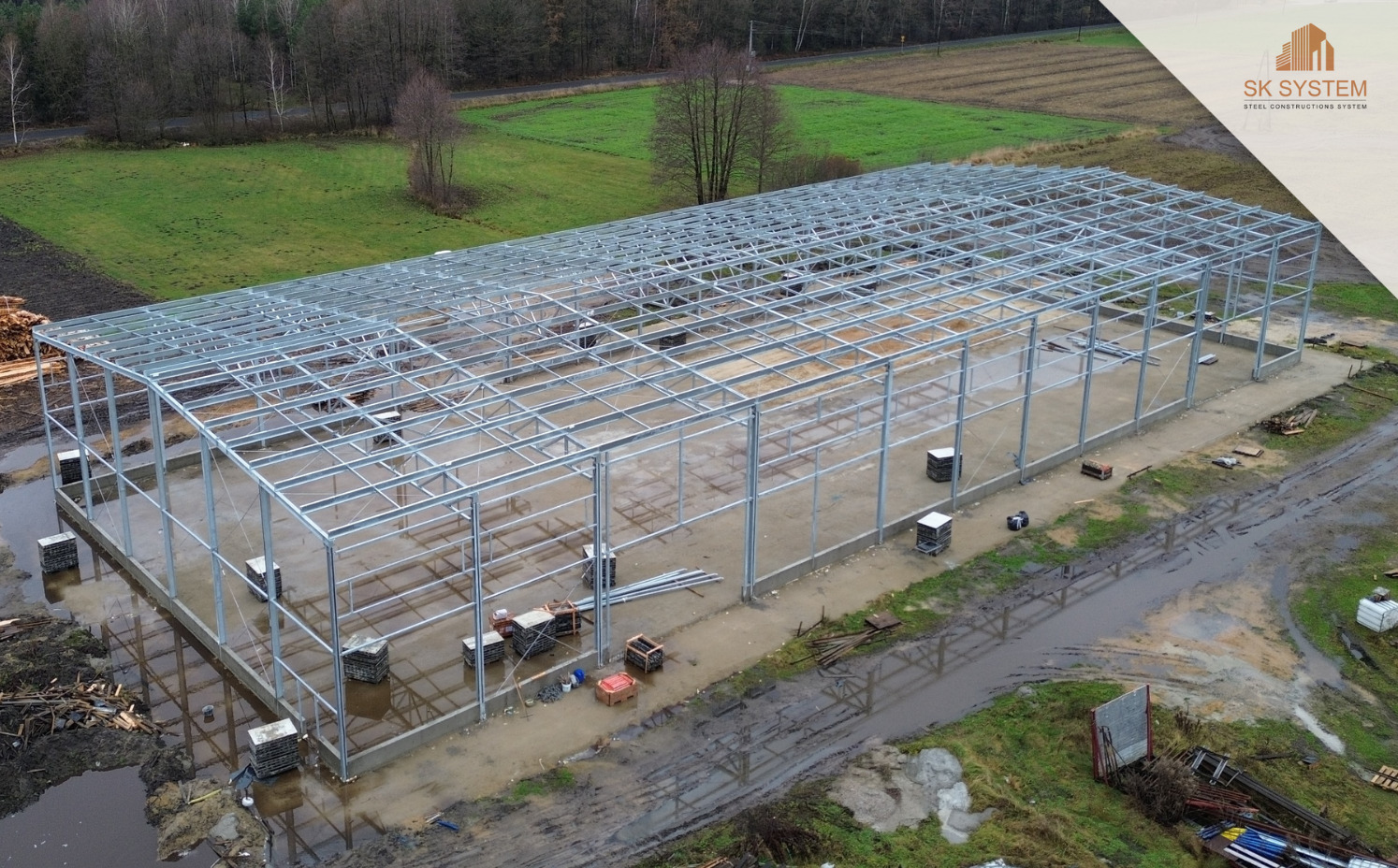The production and assembly of steel structures are advanced processes that involve creating and erecting building elements from metal, such as steel, stainless steel, or aluminium. This process begins with the design of structures, which are tailored to specific construction and functional requirements. In the production phase, steel is processed into suitable elements, such as pillars, beams, girders, columns, connectors, and other parts that make up a complete steel structure.
The production of steel structures requires precise cutting, bending, welding, and surface treatment, such as painting or galvanizing, to ensure durability and protection against corrosion. Steel structures are produced in specialized production plants, which are equipped with modern machines and technologies, allowing precise construction elements to be made according to project plans.
After production, the assembly of steel structures on the construction site begins. Assembly can be performed using various techniques, such as welding, screwing, wedging, or the use of special bolted connections. The assembly of steel structures requires precise fitting of elements, checking their correct geometry, and careful assembly in accordance with building plans.
An important aspect of the production and assembly of steel structures is also compliance with standards and regulations concerning the quality, strength, and safety of buildings. Steel structures must meet specific standards regarding strength, stability, and safety to ensure their durability and functionality during operation.
In conclusion, the production and assembly of steel structures are advanced processes that require precise design, production, and assembly of building elements from metal. Compliance with standards and regulations and attention to execution quality are key to ensuring durability, strength, and safety of steel structures in buildings.
